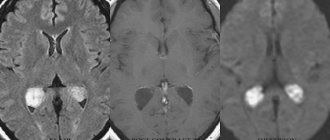1.1. Subject and tasks of developmental psychology
Developmental psychology is a branch of psychological science that studies the patterns of stages of mental development and personality formation throughout human ontogenesis from birth to old age.
The subject of developmental psychology is the age-related dynamics of the human psyche, the ontogenesis of mental processes and personality traits of a developing person, patterns of development of mental processes.
Developmental psychology studies age-related characteristics of mental processes, age-related opportunities for acquiring knowledge, leading factors in personality development, age-related changes, etc.
Age-related changes are divided into evolutionary, revolutionary and situational. Evolutionary changes include quantitative and qualitative transformations that occur in the human psyche during the transition from one age group to another. Such changes occur slowly but thoroughly, and cover significant periods of life, from several months (for infants) to several years (for older children). They are caused by the following factors: a) biological maturation and psychophysiological state of the child’s body; b) its place in the system of social relations; c) level of intellectual and personal development.
Revolutionary changes are carried out quickly, in a short period of time, they are deeper than evolutionary ones. These changes occur at the time of a crisis of age-related development, which occurs at the boundary of ages between relatively calm periods of evolutionary changes in the psyche and behavior.
Situational changes are associated with the impact of a specific social situation on the child’s psyche. These changes reflect the processes occurring in the child’s psyche and behavior under the influence of training and upbringing.
Age-related evolutionary and revolutionary changes in the psyche and behavior are stable, irreversible, and do not require systematic reinforcement. They transform the psychology of a person as an individual. Situational changes are unstable, reversible and require reinforcement in subsequent exercises. Such changes are aimed at transforming particular forms of behavior, knowledge, skills and abilities.
The theoretical task of developmental psychology is to study the patterns of mental development in ontogenesis, to establish periods of development and the reasons for the transition from one period to another, to determine the possibilities of development, as well as age-related characteristics of mental processes, age-related opportunities for acquiring knowledge, leading factors in personality development, etc.
The object of study is a child, a teenager, a young man, an adult, an elderly person.
Periodization of mental development in human life
This model involves assessing the state of the individual to determine the degree of its maturity. The so-called psychological age consists of the following components:
- Parameters of mental development. It is calculated based on the results of passing special tests.
- Level of social adaptation. Shows the level at which an individual is in relation to society, his communication skills.
- Emotional formation. This includes the ability to self-control, express and suppress emotions.
The final figure – the coefficient of mental “adulthood” – may well not correspond to the biological indicator.
1.2. Factors determining the development of developmental psychology
Child psychology as a science about the mental development of a child originated at the end of the 19th century. This began with the book of the German Darwinist scientist W. Preyer “The Soul of a Child” (St. Petersburg, 1891). In it, Preyer described the results of daily observations of his daughter’s development, paying attention to the development of sensory organs, motor skills, will, reason and language. Preyer's merit lies in the fact that he studied how a child develops in the earliest years of life, and introduced into child psychology a method of objective observation, developed by analogy with the methods of the natural sciences. He was the first to make the transition from an introspective study of the child’s psyche to an objective one.
The objective conditions for the development of child psychology that emerged at the end of the 19th century include, first of all, the rapid development of industry and, accordingly, a qualitatively new level of social life. This entailed the need to reconsider approaches to raising and educating children. Parents and teachers stopped considering physical punishment an effective method of education - more democratic families and teachers appeared. The task of understanding the child has become one of the priorities. In addition, scientists have come to the conclusion that only through studying the psychology of a child is the path to understanding what the psychology of an adult is.
Like any field of knowledge, child psychology began with the collection and accumulation of information. Scientists simply described the manifestations and further development of mental processes. The accumulated knowledge required systematization and analysis, namely:
searching for relationships between individual mental processes;
understanding the internal logic of holistic mental development;
determining the sequence of development stages;
research into the causes and ways of transition from one stage to another.
In child psychology, knowledge of related sciences began to be used: genetic psychology, which studies the emergence of individual mental functions in an adult and a child in history and ontogenesis, and educational psychology. Increasing attention has been paid to the psychology of learning. The outstanding Russian teacher, founder of scientific pedagogy in Russia K.D. made his contribution to the development of child psychology. Ushinsky (1824–1870). In his work “Man as a Subject of Education,” he wrote, addressing teachers: “Study the laws of those mental phenomena that you want to control, and act in accordance with these laws and the circumstances to which you want to apply them.”
The development of developmental psychology was facilitated by the evolutionary ideas of the English naturalist Charles Darwin (1809–1882), which served as the basis for understanding the reflex nature of mental factors. The Russian physiologist I.M. also dealt with this problem. Sechenov (1829–1905). In his classic work “Reflexes of the Brain” (1866), he gave a complete scientific substantiation of the reflex theory.
At the beginning of the 20th century, methods of experimental research into the mental development of children began to be introduced into practice: testing, the use of measuring scales, etc. Child psychology is becoming a normative discipline that describes the achievements of a child in the development process.
Over time, scientists came to the conclusion that it was necessary to distinguish stages of personality development in ontogenesis. This problem was dealt with by K. Buhler, Z. Freud, J. Piaget, E. Erikson, P.P. Blonsky, L.S. Vygotsky and others. They tried to comprehend the patterns of changing periods of development and analyze the cause-and-effect relationships of the mental development of children. All these studies have given rise to many theories of personality development, among which we can name, for example, the theory of the three stages of child development (K. Bühler), the psychoanalytic concept (S. Freud), and the cognitive theory (J. Piaget).
Developmental psychology rose to a new level with the introduction of the formative experiment method developed by the domestic psychologist L.S. Vygotsky (1896–1934). This method made it possible to determine the patterns of development of mental functions. Its use has also led to a number of theories of personality development. Let's look at some of them.
Cultural-historical concept of L.S. Vygotsky. The scientist argued that the interpsychic becomes intrapsychic. The emergence and development of higher mental functions is associated with the use of signs by two people in the process of their communication. Otherwise, the sign cannot become a means of individual mental activity.
Theory of activity by A.N. Leontyev. He believed that activity first appears as a conscious action, then as an operation, and only then, as it is formed, becomes a function.
The theory of the formation of mental actions P.Ya. Galperin. In his opinion, the formation of mental functions occurs on the basis of an objective action: it begins with the material execution of the action, and ends with mental activity, affecting the speech function.
The concept of educational activities - research by D.B. Elkonin and V.V. Davydov, in which a strategy for personality formation was developed not in laboratory conditions, but in real life - through the creation of experimental schools.
The theory of “initial humanization” by I.A. Sokolyansky and A.I. Meshcheryakov, in which the initial stages of the formation of the psyche in deaf-blind children are noted.
S. Stepanov: biography, scientific achievements
The author of the most popular test for determining internal age is Sergei Stepanov, associate professor at the Moscow PPU. In Russian scientific circles, he is known for his extensive research into the psychological state: factors influencing the speed of personality development, internal motives, and behavioral characteristics.
Stepanov received his education at the Faculty of Psychology of Moscow State University, and immediately after graduation he went to work. Simultaneously with his work at the institute, he began writing books on psychology. From 1984 to 1997 he worked as a scientific editor at the Great Russian Encyclopedia publishing house. In addition to his main research work, he published more than 100 articles. He also translated works of famous psychologists who studied psychological development.
Stepanov created the age test based on research results. It was included in his book “Psychological Tests,” which was published in 2002. Stepanov’s complete bibliography includes more than 30 books.
1.3. Research methods in developmental psychology
The set of research methods used in developmental psychology consists of several blocks of techniques borrowed from general, differential and social psychology.
Methods for studying cognitive processes and a child’s personality are taken from general psychology. They are adapted to the child's age and explore perception, attention, memory, imagination, thinking and speech. Using these methods, it is possible to obtain information about the age-related characteristics of children’s cognitive processes and the transformations of these processes as the child grows up, i.e., about the specifics of the transition from one age group to another.
Methods for studying individual and age differences in children are borrowed from differential psychology. The so-called “twin method”, which studies the similarities and differences between homozygous and heterozygous twins, is very popular. Based on the data obtained, conclusions are drawn about the organic (genotypic) and environmental conditioning of the child’s psyche and behavior.
Social psychology has provided developmental psychology with methods that allow it to study interpersonal relationships in various children's groups, as well as relationships between children and adults. These methods include: observation, survey, conversation, experiment, cross-sectional method, testing, questioning, analysis of activity products. All these methods are also adapted to the age of the child. Let's look at them in more detail.
Observation
- the main method when working with children (especially preschool age), since tests, experiments, surveys are difficult to study children's behavior.
It is necessary to begin observation by setting a goal, drawing up an observation program, and developing an action plan
. The purpose of observation is to determine why it is being carried out and what results can be expected as a result.
In order to obtain reliable results, monitoring must be carried out regularly. This is due to the fact that children grow very quickly and the changes that occur in the child’s behavior and psyche are also fleeting. For example, a baby's behavior changes before our eyes, so by missing one month, the researcher is deprived of the opportunity to obtain valuable data about his development during this period.
The younger the child, the shorter the interval between observations should be. During the period from birth to 2–3 months, the child should be monitored daily; at the age of 2–3 months to 1 year – weekly; from 1 year to 3 years – monthly; from 3 to 6–7 years – once every six months; at primary school age - once a year, etc.
The observation method when working with children is more effective than others, on the one hand, because they behave more directly and do not play social roles characteristic of adults. On the other hand, children (especially preschoolers) do not have sufficiently stable attention and can often be distracted from the task at hand. Therefore, whenever possible, covert observation should be carried out so that the children do not see the observer.
Survey
can be oral and written. When using this method, the following difficulties may arise. Children understand the question asked to them in their own way, that is, they put a different meaning into it than an adult. This happens because the system of concepts in children is significantly different from the one used by adults. This phenomenon is also observed in adolescents. Therefore, before getting an answer to the question asked, you need to make sure that the child understands it correctly by explaining and discussing inaccuracies, and only after that interpret the answers received.
Experiment
is one of the most reliable methods of obtaining information about the behavior and psychology of a child. The essence of the experiment is that in the process of research, mental processes of interest to the researcher are evoked in the child and conditions are created that are necessary and sufficient for the manifestation of these processes.
A child, entering an experimental play situation, behaves directly, responding emotionally to the proposed situations, and does not play any social roles. This makes it possible to obtain its true reactions to the influencing stimuli. The results are most reliable if the experiment is carried out in the form of a game. At the same time, it is important that the child’s immediate interests and needs are expressed in the game, otherwise he will not be able to fully demonstrate his intellectual abilities and necessary psychological qualities. In addition, when participating in an experiment, a child acts momentarily and spontaneously, so throughout the entire experiment it is necessary to maintain his interest in the event.
Slices
- another research method in developmental psychology. They are divided into transverse and longitudinal (longitudinal).
The essence of the cross-sectional method is that in a group of children (a class, several classes, children of different ages, but studying in the same program), some parameter (for example, intellectual level) is studied using certain techniques. The advantage of this method is that in a short time it is possible to obtain statistical data on age-related differences in mental processes, to establish how age, gender or other factor influences the main trends of mental development. The disadvantage of the method is that when studying children of different ages, it is impossible to obtain information about the development process itself, its nature and driving forces.
When using the method of longitudinal (longitudinal) sections, the development of a group of the same children is traced over a long period of time. This method allows us to establish qualitative changes in the development of mental processes and the child’s personality and identify the causes of these changes, as well as study development trends and minor changes that cannot be covered by cross-sections. The disadvantage of the method is that the results obtained are based on studying the behavior of a small group of children, so it seems incorrect to extend such data to a large number of children.
Testing
allows you to identify the level of intellectual abilities and personal qualities of the child. It is necessary to maintain children's interest in this method in ways that are attractive to them, for example, encouragement or some kind of reward. When testing children, the same tests are used as for adults, but adapted for each age, for example, the children's version of the Cattell test[1], Wechsler test[2], etc.
Conversation
- this is obtaining information about the child through direct communication with him: the child is asked targeted questions and expected answers to them. This method is empirical. An important condition for the effectiveness of a conversation is a favorable atmosphere, goodwill, and tact. Questions must be prepared in advance and the answers recorded, if possible without attracting the attention of the subject.
Questioning
is a method of obtaining information about a person based on his answers to pre-prepared questions. Questionnaires can be oral, written, individual or group.
Analysis of activity products
is a method of studying a person through the analysis of the products of his activity: drawings, blueprints, musical works, essays, school notebooks, personal diaries, etc. Thanks to this method, you can obtain information about the child’s inner world, his attitude to the surrounding reality and people, about peculiarities of his perception and other aspects of the psyche. This method is based on the principle of the unity of consciousness and activity, according to which the child’s psyche is not only formed, but also manifested in activity. By drawing or creating something, a child provides researchers with the opportunity to reveal aspects of his psyche that would be difficult to find out using other methods. Based on the drawings, you can study cognitive processes (sensations, imagination, perception, thinking), creative abilities, personal manifestations, and children’s attitude towards people around them.
Periods
So, we continue to discuss the concept of age in psychology. Age and development require gradation into life stages. Let's consider this concept based on four approaches used to assess years lived.
- Biological age. Based on the formation of the human body.
- Psychological. Based on cultural behavior.
- Social age. Reflects the degree of acceptance of social roles and tasks, as well as their functions.
- Physical. It is assessed solely by the amount of time lived.
According to biological age indicators, the life course is divided into the following stages:
- Children under 16 years old.
- Youth – people aged 16 to 21 years.
- Maturity – up to 60 years.
- Old age begins at 60 years of age.
So we looked at periods and the concept of age in psychology. What factors influence psychological age?
1.4. Historical analysis of the concept of “childhood”
Childhood is a term denoting the initial period of ontogenesis, from birth to adolescence. Childhood covers infancy, early childhood, preschool age and primary school age, i.e. lasts from birth to 11 years.
Surely, for some, childhood is associated with carelessness, carefreeness, games, pranks, study, while for others, childhood is a time of active development, change and learning. In fact, childhood is a period of paradoxes and contradictions, without which there can be no development. So, what characterizes this period?
It has been noticed that the higher a living creature stands in the ranks of animals, the longer its childhood lasts and the more helpless this creature is at birth. Undoubtedly, man is the most perfect creature in nature. This is confirmed by its physical structure, organization of the nervous system, types of activity and methods of its regulation. However, when a person is born, he is endowed with only the most basic mechanisms for maintaining life. He is helpless and cannot fend for himself; he requires care, which is carried out for a long time. This is one of the paradoxes of nature that predetermines the history of childhood.
Many scientists have paid attention to the history of childhood. An outstanding specialist in the field of child and educational psychology D.B. Elkonin wrote: “Throughout all human history, the starting point of child development has remained unchanged. The child interacts with a certain ideal form, that is, with the level of cultural development achieved by society in which he was born. This ideal form develops all the time, and develops spasmodically, that is, it changes qualitatively” (D.B. Elkonin, 1995). His words are confirmed by the fact that people of different eras are not alike. Consequently, the development of the psyche in ontogenesis must also change radically.
Time does not stand still. With the development of scientific and technological progress, the life of society becomes more complicated and the child’s position in it changes accordingly. Previously, children mastered primitive tools by helping their parents cultivate the land; they learned this from adults by watching them and repeating their actions. With the development of scientific and technological progress and the emergence of new production relations, tools became more complex, and to master them, observing adults alone was not enough. Therefore, it became necessary to first study the process of mastering these tools and only then begin to use them. Consequently, the new stage of learning was due to the complexity of tools.
D.B. Elkonin connected the periods of child development with the periodization of the development of society (Table 1)
Table 1
Periods of child development according to D.B. Elkonin
End of table. 1
Perhaps in the near future it will become mandatory for everyone to have a higher education for the development of society. This is primarily due to the development of computer technology. But it is impossible to endlessly expand the age limits of childhood, so pedagogical and developmental psychology will most likely be faced with the task of improving teaching methods in order to reduce the time to master the school curriculum.
It turns out that the duration of childhood is directly dependent on the level of material and spiritual development of society and even its individual layers. In many ways, the length of childhood also depends on the material well-being of the family: the poorer the family, the earlier children begin to work.
Problems of periodization
The actual age of a person does not always correspond to the degree of his psychological, biological, intellectual and social development. Established boundaries can shift depending on the individual characteristics of a person. The framework that characterizes adolescence is especially inaccurate. Essentially, one stage gives way to another after the individual develops previously non-existent qualities. This is how the transition from one point to another occurs.
Ask a question
2.1. Biogenetic and sociogenetic concepts
Proponents of the biogenetic concept of development believe that the basic mental properties of a person are inherent in human nature itself (biological origin), which determines his destiny in life. They consider intelligence, immoral personality traits, etc. to be genetically programmed.
The first step towards the emergence of biogenetic concepts was Charles Darwin's theory that development - genesis - obeys a certain law. Subsequently, any major psychological concept has always been associated with the search for the laws of child development.
The German naturalist E. Haeckel (1834–1919) and the German physiologist I. Müller (1801–1958) formulated a biogenetic law, according to which animals and humans during intrauterine development briefly repeat the stages that a given species goes through in phylogenesis. This process was transferred to the process of ontogenetic development of the child. American psychologist S. Hall (1846–1924) believed that a child’s development briefly repeats the development of the human race. The basis for the emergence of this law was observations of children, as a result of which the following stages of development were identified: cave, when the child digs in the sand, the stage of hunting, exchange, etc. Hall also assumed that the development of children's drawing reflects the stages that fine art went through in the history of mankind.
Theories of mental development associated with the idea of repetition in this development of human history are called theories of recapitulation.
Outstanding Russian physiologist I.P. Pavlov (1849–1936) proved that there are acquired forms of behavior that are based on conditioned reflexes. This gave rise to the point of view that human development comes down to the manifestation of instinct and training. The German psychologist W. Köhler (1887–1967), conducting experiments on anthropoid apes, discovered the presence of intelligence in them. This fact formed the basis of the theory according to which the psyche in its development goes through three stages: 1) instinct; 2) training; 3) intelligence.
The Austrian psychologist K. Bühler (1879–1963), relying on the theory of W. Köhler and under the influence of the works of the founder of psychoanalysis, the Austrian psychiatrist and psychologist Z. Freud (1856–1939), put forward the principle of pleasure as the main principle of the development of all living things. He connected the stages of instinct, training and intelligence not only with the maturation of the brain and the complication of relationships with the environment, but also with the development of affective states - the experience of pleasure and associated action. Bühler argued that at the first stage of development - the stage of instinct - thanks to the satisfaction of an instinctive need, the so-called “functional pleasure” occurs, which is a consequence of performing an action. And at the stage of intellectual problem solving, a state arises that anticipates pleasure.
V. Köhler, studying the development of a child using a zoopsychological experiment, noticed similarities in the primitive use of tools in humans and monkeys.
A diametrically opposite approach to the development of a child’s psyche is adhered to by supporters of the sociogenetic (sociologization) concept. They believe that there is nothing innate in human behavior and every action is only a product of external influence. Therefore, by manipulating external influences, you can achieve any results.
Back in the 17th century. English philosopher John Locke (1632–1704) believed that a child is born with a pure soul, like a white sheet of paper on which you can write anything you want, and the child will grow up the way his parents and loved ones want him to be. According to this point of view, heredity does not play any role in the development of the child’s psyche and behavior.
American psychologist J.B. Watson (1878–1958) put forward the slogan: “Stop studying what a person thinks, let's study what a person does!” He believed that there is nothing innate in human behavior and that every action is a product of external stimulation. Consequently, by manipulating external stimuli, you can “create” a person of any type. In learning studies that took into account the experimental results obtained by I.P. Pavlov, the idea of combining stimulus and response, conditioned and unconditional stimuli came to the fore, and the time parameter of this connection was highlighted. This formed the basis of the associationist concept of learning by J. Watson and E. Ghazri, which became the first program of behaviorism. Behaviorism is a trend in American psychology of the 20th century that denies consciousness as a subject of scientific research and reduces the psyche to various forms of behavior, understood as a set of reactions of the body to environmental stimuli. According to J. Watson, "all such terms as consciousness, sensation, perception, imagination or will can be excluded in the description of human activity." He identified human behavior with animal behavior. Man, according to Watson, is a biological being that can be studied like any other animal. Thus, classical behaviorism emphasizes the process of learning based on the presence or absence of environmental reinforcement.
Representatives of neobehaviorism, American psychologists E. Thorndike (1874–1949) and B. Skinner (1904–1990) created the concept of learning, which was called “operant conditioning.” This type of learning is characterized by the fact that in the establishment of a new associative stimulus-reactive connection, the functions of the unconditional stimulus play an important role, that is, the main emphasis is on the value of reinforcement.
N. Miller and American psychologist K.L. Hull (1884–1952) - the authors of the theory in which the answer was given to the question: does learning, that is, the establishment of a connection between a stimulus and a response, depend on such states of the subject as hunger, thirst, pain.
Based on existing theories, we can conclude that in sociogenetic theories, the environment is considered as the main factor in the development of the psyche, and the child’s activity is not taken into account.
Critical moments
The periodization of an individual’s life path is associated with metamorphoses occurring in the body: hormonal levels change, which affects mood and behavior.
8 main crisis phases:
- teenage;
- transition to adulthood;
- 30th anniversary;
- approaching the fourth decade;
- 40th anniversary;
- midway (45 years);
- 50th anniversary;
- 55th anniversary;
- 56th birthday.
Overcoming crises
Living through each of these periods, a person steps through a certain stage of development, acquires new skills, knowledge, and experience. The teenager strives for independence from his parents and searches for his own path. At the age of 30, a person reevaluates his ideals and changes his views on the world. By the age of 40, he wants to strengthen himself in social roles, achieve success in his career, and thinks more rationally. Halfway through the journey, he again begins to think about the correctness of his way of life, wants to do something that will leave a mark after him. At 50, problems appear at the physiological level, health comes to the fore, and at 55, awareness of one’s experience, wisdom, and importance comes. By 56, experiences about the spiritual sphere flow into the desire to develop internally.
If you prepare yourself in advance for the approaching period of crisis, it will pass easier. The main thing is not to be afraid to ask for help if you need it. Mental health is no less important than physical health. If you are confused and cannot understand the reasons for your depression, sign up for my consultation. By connecting the metaphysical space, together we will find answers to complex questions.
2.2. Theory of convergence of two factors of child development
The theory of convergence, or, as it is also called, the theory of two factors, was developed by the German psychologist W. Stern (1975–1938), who was a specialist in the field of differential psychology, which examines the relationship between biological and social factors. The essence of this theory is that the mental development of a child is considered as a process that takes shape under the influence of heredity and environment. The main question of convergence theory is to establish how acquired forms of behavior arise and how they are influenced by heredity and the environment.
At the same time, there were two theoretical concepts in psychology, empiricism (“man is a blank slate”) and nativism (innate ideas exist). Stern believed that if there are reasons for the existence of these two opposing points of view, then the truth lies in their combination. He believed that mental development is a combination of internal data with external conditions, but the leading significance still remains with the innate factor. An example of this is the following fact: the world around us supplies the child with material for play, and how and when he will play depends on the innate components of the play instinct.
V. Stern was a supporter of the concept of recapitulation and said that a child in the first months of infancy is at the stage of a mammal: this is confirmed by thoughtless reflexive and impulsive behavior; in the second half of life, he reaches the stage of a higher mammal (monkey) thanks to the development of grasping objects and imitation; later, having mastered upright walking and speech, he reaches the initial stages of the human condition; in the first five years of games and fairy tales he stands on the level of primitive peoples; a new stage - entering school - is associated with mastering social responsibilities of a higher level. The first school years are associated with the simple content of the ancient and Old Testament worlds, the middle classes - with Christian culture, and the years of maturity - with the culture of modern times.
The theory of developmental convergence is confirmed by the statements that “the apple doesn’t fall far from the tree” and “whoever you mess with, you’ll get better from.” The English psychologist G. Eysenck (1916–1997) believed that intelligence is 80% determined by the influence of heredity and 20% by the influence of the environment.
Austrian psychologist 3. Freud created a structural theory of personality, the basis of which was the conflict between the instinctive sphere of a person’s mental life and the demands of society. He believed that every person is born with innate sexual desires, which are subsequently controlled by the “Super-Ego” and “Id”. “It” is an internal psychic agency that, under the influence of prohibitions, separates out a small piece of “I”. The “super-ego” is an authority that limits human desires. It turns out that the “I” is under pressure from the “It” and the “Super-Ego”. This is a typical diagram of two development factors.
Psychologists were able to establish the influence of biological and social aspects on the development process by observing twins and comparing the results obtained. This method was called the twin method. As shown by D.B. Elkonin, from a methodological point of view, there is one serious flaw in the study of twins: the problem of the hereditary fund is considered from the standpoint of identity or non-identity, and the problem of environmental influences is always considered from the standpoint of identity. But there is no one (identical) social environment in which twins are raised - it is imperative to take into account what elements of the environment the child actively interacts with. Therefore, to obtain reliable results, it is necessary to choose situations in which the equation contains not one, but two unknowns. This leads to the conclusion that this method can be used to study individual differences rather than developmental problems.
2.3. Psychoanalytic theories of child development
Psychoanalysis initially emerged as a method of treatment, but was soon adopted as a means of obtaining psychological facts that formed the basis of a new psychological system.
3. Freud, analyzing the free associations of patients, came to the conclusion that the illnesses of an adult are reduced to childhood experiences. The basis of the theoretical concept of psychoanalysis is the discovery of the unconscious and sexual principles. The scientist attributed to the unconscious the inability of patients to understand the true meaning of what they say and what they do. Childhood experiences, according to Freud, are of a sexual nature. This is a feeling of love and hatred towards a father or mother, jealousy towards a brother or sister, etc.
In his model of personality, Freud identified three main components: “Id”, “I” and “Super-ego”. “It” is the carrier of instincts, “a seething cauldron of drives.” Being irrational and unconscious, the “It” obeys the pleasure principle. “I” follows the principle of reality and takes into account the features of the external world, its properties and relationships. The “super-ego” is a critic, censor and bearer of moral standards. The demands on the “I” from the “It”, “Super-Ego” and reality are incompatible, therefore an internal conflict arises, which can be resolved with the help of “defense mechanisms”, such as repression, projection, regression, sublimation.
In Freud's understanding, personality is the interaction of motivating and restraining forces. All stages of human mental development, in his opinion, are associated with sexual development. Let's look at these stages.
Oral stage
(from birth to 1 year). Freud believed that at this stage the main source of pleasure is concentrated in the zone of activity associated with feeding. The oral stage consists of two phases - early and late, occupying the first and second half of life. In the early phase there is a sucking action, in the late phase there is a biting action. The source of displeasure is associated with the mother’s inability to immediately satisfy the child’s desire. At this stage, the “I” is gradually disconnected from the “It”. The erogenous zone is the mouth.
Anal stage
(1–3 years). It consists of two phases. Libido is concentrated around the anus, which becomes the object of attention of the child, accustomed to neatness. The child’s “I” learns to resolve conflicts by finding compromises between the desire for pleasure and reality. At this stage, the “I” instance is fully formed, and it can control the impulses of the “It”. Social coercion, parental punishment and fear of losing their love force the child to mentally imagine prohibitions. The “Super-I” begins to form.
Phallic stage
(3–5 years). This is the highest level of child sexuality; the main erogenous zone is the genital organs. Parents of the opposite sex to the child become the first to attract their attention as an object of love. 3. Freud called such attachment in boys the “Oedipus complex”, and in girls the “Electra complex”. According to Freud, the Greek myth of King Oedipus, who was killed by his own son and subsequently married his mother, contains the key to the sexual complex: the boy experiences love for his mother, perceiving his father as a rival, causing both hatred and fear. But at the end of this stage, liberation from the “Oedipus complex” occurs due to fear of castration; the child is forced to renounce his attraction to his mother and identify himself with his father. After this, the “Super-I” instance is completely differentiated.
Latent stage
(5-12 years old). There is a decrease in sexual interest; the “I” authority completely controls the needs of the “It”. The energy of libido (attraction) is transferred to establishing friendly relations with peers and adults, to mastering universal human experience.
Is age really that important?
Age periodization is a very relative concept. There is no need to strive with all our might to prolong youth: nature will take its course, and our task is to find something valuable and beautiful in each of the stages we have passed through. Yes, it is worth taking into account the physiological and mental characteristics of each period. But they should be accepted not as a fatal inevitability, but as a resource with which you can live as fully as possible.
You yourself have the right to decide by what indicators to highlight certain life intervals. Not only external beauty, youth and physical activity are important. What matters is how you feel about yourself, what plans and dreams you have and how you want to live your precious time.







